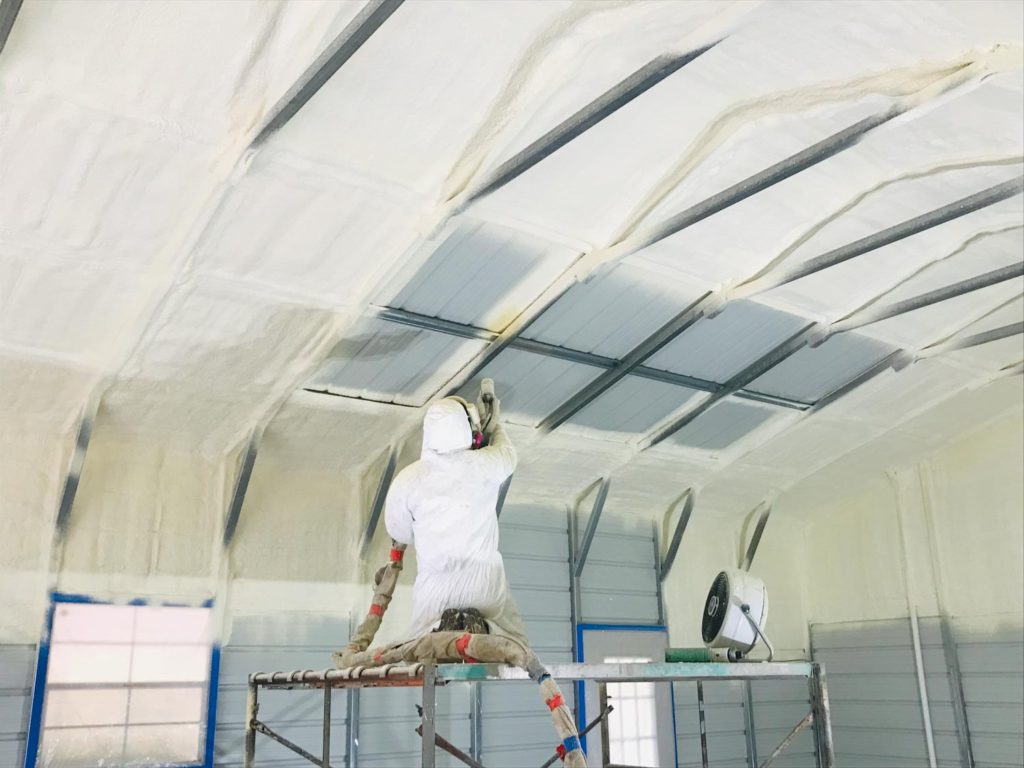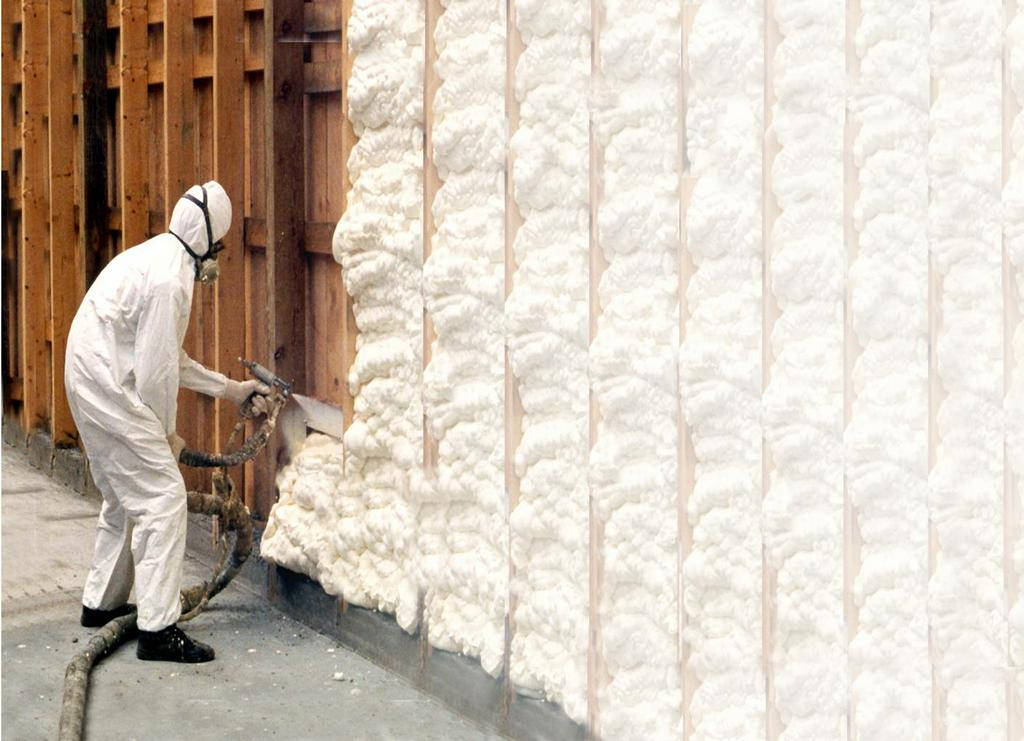Spray Foam: The Ultimate Solution for Air Sealing and Insulation
Spray foam insulation has actually emerged as a leading service for effective air securing and thermal insulation, supplying an one-of-a-kind mix of buildings that establish it apart from standard techniques. Comprehending the full scope of its advantages, installment processes, and comparisons with various other insulation kinds is vital for making notified decisions.
What Is Spray Foam?
Spray foam is a versatile insulation product that incorporates the principles of air sealing and thermal resistance to boost power effectiveness in buildings. Made up largely of polyurethane or various other comparable compounds, spray foam is applied as a liquid that increases upon call with surface areas, producing a solid, continual layer of insulation. This unique residential property enables it to fill voids, fractures, and voids that typical insulation materials may forget, supplying an exceptional air seal.
There are two major kinds of spray foam: open-cell and closed-cell. Open-cell spray foam is lighter and much more flexible, providing exceptional audio absorption and a reduced R-value per inch - Spray Foam. On the other hand, closed-cell spray foam is denser, offering a higher R-value, moisture resistance, and added structural honesty to developing parts
The application process typically includes customized tools, making certain a seamless application that complies with various substratums, consisting of metal, timber, and concrete. This adaptability makes spray foam appropriate for both brand-new constructions and retrofitting existing frameworks. Its capacity to create a closed obstacle significantly contributes to lowering energy consumption and enhancing interior air quality, thus making it a recommended choice among building contractors and homeowners alike.
Benefits of Spray Foam Insulation
Among one of the most substantial advantages of spray foam insulation is its outstanding capacity to develop a continual air obstacle, which effectively minimizes energy loss. Unlike conventional insulation materials, spray foam broadens to fill up spaces and fractures, making certain that air leak is significantly decreased. This characteristic not only improves energy effectiveness yet additionally brings about decrease energy expenses gradually.
In addition, spray foam insulation gives superior thermal resistance, adding to an extra secure interior setting. Its high R-value per inch permits for reliable insulation in constrained spaces, making it ideal for attics, walls, and crawl spaces. Additionally, the moisture-resistant residential or commercial properties of spray foam help prevent mold and mold development, promoting healthier living conditions.
Another essential advantage of spray foam insulation is its sound-dampening high qualities (Spray Foam). It effectively lowers noise transmission between spaces, creating a quieter and extra comfortable home setting. The toughness of spray foam likewise stands out, as it does not droop or settle with time, preserving its efficiency throughout its life expectancy
Just How Spray Foam Works
Recognizing how spray foam insulation functions is important for valuing its effectiveness in air securing and thermal resistance. Spray foam insulation includes two key components: isocyanate and polyol resin. When these parts are mixed, they go through a chemical response that triggers the product to increase rapidly, developing a thick foam that fills up splits, cavities, visit site and spaces.
As the foam expands, it sticks to surface areas, forming a closed seal that dramatically reduces air infiltration. This particular makes spray foam insulation very effective at protecting against drafts and wetness infiltration, which can lead to energy loss and damages over time. In addition, the closed-cell variation of spray foam offers remarkable thermal resistance due to its stiff framework, efficiently decreasing heat transfer.
The special homes of spray foam permit it to comply with irregular surfaces, ensuring thorough coverage and a smooth obstacle. As an outcome, spray foam insulation not just enhances power effectiveness however additionally adds to boosted interior air top quality by minimizing the buildup of irritants and toxins. Eventually, recognizing the auto mechanics behind spray foam highlights its function as a remarkable option for insulation and air sealing in both industrial and property applications.
Installment Refine Overview

Before setup, the area has to be effectively cleansed and prepped, guaranteeing that surface areas are cost-free from dust, debris, and wetness. This action is essential since impurities can endanger adhesion and see this page overall performance. As soon as the area is prepared, the application involves mixing both elements of the spray foam, which broadens upon get in touch with and loads voids properly.
Educated specialists need to perform the installment, making use of customized tools to make certain consistent insurance coverage and optimum thickness. Security safety measures, including using protective gear and ensuring correct air flow, are important during this process. After application, the foam typically cures quickly, creating a strong obstacle that improves energy efficiency.
Contrasting Spray Foam to Traditional Insulation
When assessing insulation options, spray foam insulation stands out in contrast to standard products such as fiberglass and cellulose. One of the main advantages of spray foam is its exceptional air sealing capacities. Unlike fiberglass and cellulose, which can permit air seepage, spray foam broadens upon application, filling up gaps and spaces to create an airtight seal. This results in boosted power effectiveness, as less heated or cooled down air runs away the home, resulting in lower energy bills.
Furthermore, spray foam provides a greater R-value per inch than traditional insulation kinds, offering even more effective thermal resistance in a thinner profile. This particular is especially beneficial in rooms with limited cavity deepness. Additionally, spray foam is resistant to wetness and mold and mildew development, which can be a significant problem with cellulose and fiberglass, particularly in moist environments.
Nevertheless, spray foam insulation commonly carries a higher ahead of time price than its conventional equivalents. Home owners must evaluate this preliminary financial investment versus long-term energy cost savings and efficiency advantages. Inevitably, while both insulation types serve their function, spray foam becomes an advanced solution for contemporary insulation requirements, specifically in regards to air sealing and thermal efficiency.

Conclusion
In summary, spray foam insulation represents an extremely efficient service for accomplishing ideal air securing and thermal resistance. Its special properties, consisting of dampness resistance and audio dampening, make it ideal for numerous applications in both brand-new building and constructions and retrofitting tasks (Spray Foam). Although the first expenses might be higher compared to conventional insulation materials, the long-term advantages, such as substantial power cost savings and boosted indoor try here air high quality, validate the investment and highlight its worth in contemporary building techniques.
Spray foam insulation has actually emerged as a leading option for effective air securing and thermal insulation, using a distinct combination of properties that establish it apart from conventional methods.Spray foam is a functional insulation material that combines the concepts of air sealing and thermal resistance to improve power performance in buildings.When assessing insulation options, spray foam insulation stands out in contrast to standard materials such as fiberglass and cellulose. Ultimately, while both insulation types offer their objective, spray foam emerges as an extra advanced remedy for modern-day insulation requirements, specifically in terms of air sealing and thermal performance.
In recap, spray foam insulation represents an extremely reliable solution for accomplishing optimum air securing and thermal resistance.